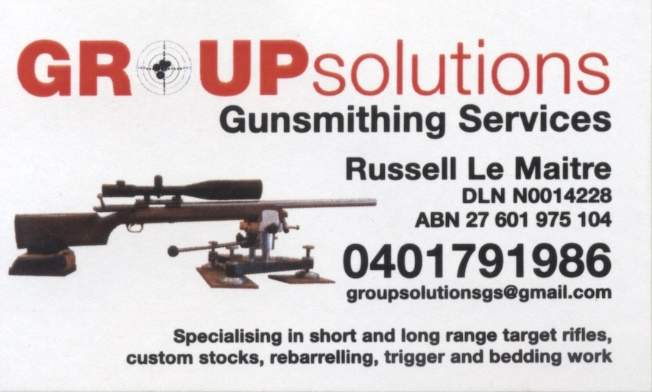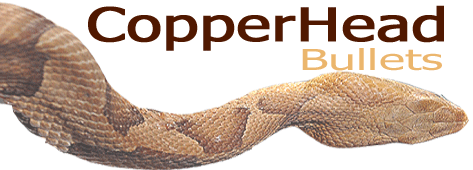A Discussion on Wet Molly Vs Dry Molly Methods.
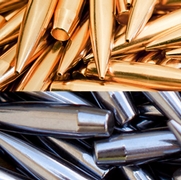
Some time ago, perhaps a few years, I remember reading an article on some yankie website about mollying projectiles in a water bath. At that point in time everything I understood about molly suggested you should do as much as possible to keep moisture of any kind OUT of the equation altogether, so I didn’t really digest the content. I think I just dismissed it out of hand.
A while later, when visiting Matt Paroz (gunsmith), I noticed a vibratory tumbler similar to mine sitting on the grass in his backyard. Taking a peek inside I noticed a pile of projectiles covered in a black slurry.
“What are you up to here”? I inquired. Oh, just doing a bit of mollying was the response.
Apparently, Matt had a conversation with renowned F-Class & 500 Fly shooter Rod Davies who had experimented with molly application in this way and was sold on the method. So too was Matt. After getting some verbal instructions I also gave it a go and the results were great!
So….here’s a quick overview of the process.. padded out with a few rough pics.
- Sprinkle a small amount of molly into a tumbler with about a cup of water.
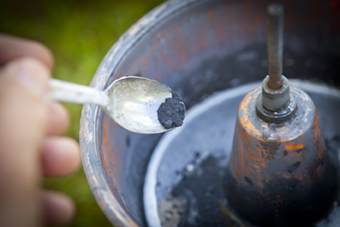
2. Pour about 200 projectiles (103 copperheads used in this)
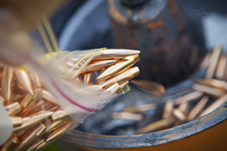
3. Just cover projectiles with a little more water (if needed).
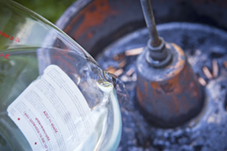
4. Turn the tumbler for about 2 hours. (best to put the lid on)

5.About now you should reach for the rubber glove & scoop out all the projectiles.
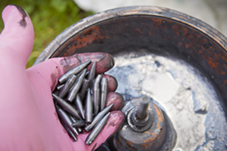
6. Place them on a cloth & give them a dry…you can use a hair dryer if you wish.
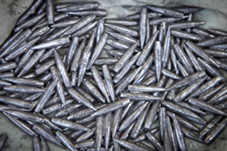
7. Place the dried projectiles in an old sock & agitate them back & forth for a minute or so which will polish them up a treat.
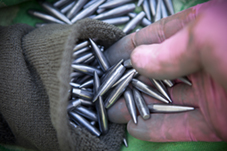
8. The result….beautifully mollied projectiles that look so good you won’t want to shoot them off.
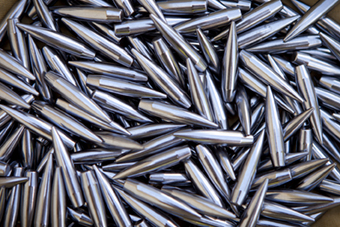
OK….so the burning questions are of course; “Why would I want to Molly?” & “Why is wet better than dry?”
To answer the 1st question;
There are quite a few arguments, both for & against dry lubricating projectiles. Theoretically, lubricating projectiles allows for more shots between cleans. Short-range benchresters know that it always takes a few shots to get the barrel back to speed after a clean but they have unlimited sighters so no problems. In fly shooting we are allowed 3 sighters per target & these sighters are gold so wasting them on re-fouling barrels after a clean isn’t really a very good strategy. Thus it is considered better not to clean if you can get away with it…enter molly.
To answer the 2nd question;
To my mind, there are many reasons to use the “wet” method.
1. It’s quieter because the water absorbs a lot of the racket from the tumbler.
2. It’s cleaner; there’s virtually no molly dust because the water damps it down.
3. You don’t need heat! The dry method undoubtedly gives best results when the projectiles are heated up. It doesn’t seem necessary when using the wet method, simply put the projectiles in the water regardless of temperature. I’ve done it in the middle of winter in water that was ice cold & the results were fine.
4. Most importantly….the molly sticks! It’s very difficult to rub off. No molly on your fingertips when seating projectiles indicating better adhesion. Some of the yanks even go to the trouble of putting wax on the projectiles after mollying to keep it on…definitely not necessary when using the wet method.
All the Best,
Belly

